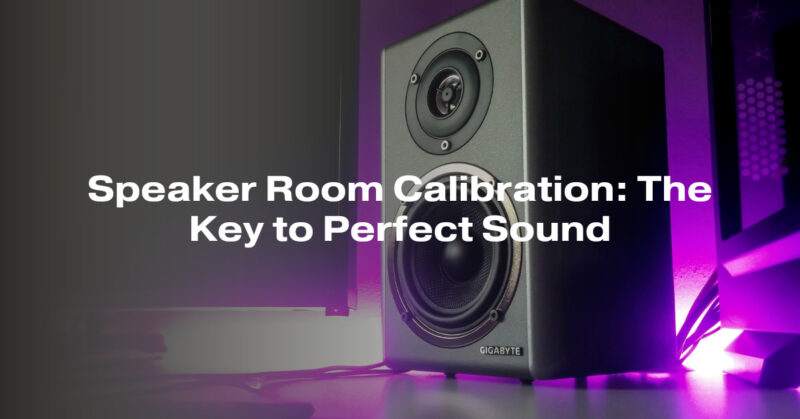Speaker room calibration, also known as room correction or acoustic calibration, is a process that aims to optimize the sound quality of audio systems, especially in home theaters and high-end audio setups. It addresses the impact of room acoustics on sound reproduction by adjusting various audio parameters to achieve the best possible audio quality. Here’s a closer look at the key aspects of speaker room calibration:
1. Room Acoustics:
- Every room has its unique acoustic characteristics, including factors like room size, shape, wall materials, furniture, and decor. These factors can introduce reflections, resonances, and standing waves that affect the way sound is perceived.
2. Speaker Positioning:
- The placement of speakers within a room can significantly impact sound quality. Suboptimal speaker positioning can result in uneven frequency response, imprecise imaging, and poor soundstage.
3. Calibration Equipment:
- To perform room calibration, specialized equipment is often used. This can include a calibrated microphone, an audio measurement system or software, and a processor or receiver capable of implementing corrections.
4. Measurement Process:
- The calibration process typically involves taking audio measurements at various locations in the listening area. These measurements capture the room’s response to the speakers and identify areas where acoustic issues may be present.
5. Frequency Response Correction:
- One of the primary goals of room calibration is to correct the frequency response of the speakers. This involves adjusting the amplitude of specific frequency bands to compensate for room-induced peaks and dips in the response.
6. Time Alignment:
- In some systems, time alignment is considered, ensuring that sound from all speakers reaches the listener’s ears simultaneously. This can improve imaging and localization of sound sources.
7. Equalization:
- Room calibration systems often apply equalization (EQ) to the audio signal to compensate for variations in frequency response caused by room acoustics. Parametric EQs or graphic EQs may be used.
8. Crossover Settings:
- In systems with multiple speakers, calibration may involve setting crossover frequencies and slopes to ensure a seamless transition between speakers, such as subwoofers and main speakers.
9. Speaker Level Matching:
- The calibration process may also involve adjusting the relative levels of speakers to ensure balanced audio output.
10. Phase Correction: – Some advanced calibration systems address phase issues in the room by adjusting the timing of speaker signals to improve coherency and clarity.
11. User Preferences: – While calibration seeks to optimize audio quality, it should also accommodate user preferences. Listeners may have specific preferences for bass response, tonal balance, and other sonic attributes that can be considered during the calibration process.
12. Room Correction Software: – Several room correction software solutions are available, such as Audyssey, Dirac Live, and room calibration tools provided by AV receiver manufacturers. These software packages often include automated calibration routines and user-friendly interfaces.
Benefits of Speaker Room Calibration:
- Improved Sound Quality: Calibration can help achieve a flatter frequency response, clearer imaging, and a more balanced soundstage, resulting in enhanced audio quality.
- Consistency: Calibration ensures that the audio system performs consistently across different listening positions in the room.
- Room Flexibility: With calibration, audio systems can adapt to various room configurations and layouts, allowing for greater flexibility in speaker placement.
- Elimination of Acoustic Issues: Calibration addresses common room-related acoustic problems, such as bass booms, echoes, and standing waves.
- Tailored Listening Experience: Room calibration can be customized to match the listener’s preferences, whether they prefer a neutral response or a specific sound signature.
In conclusion, speaker room calibration is an essential tool for optimizing audio systems in rooms with diverse acoustic characteristics. By addressing the impact of room acoustics and fine-tuning audio parameters, calibration helps achieve a more accurate and enjoyable listening experience, whether in a home theater, music studio, or audiophile setup.


